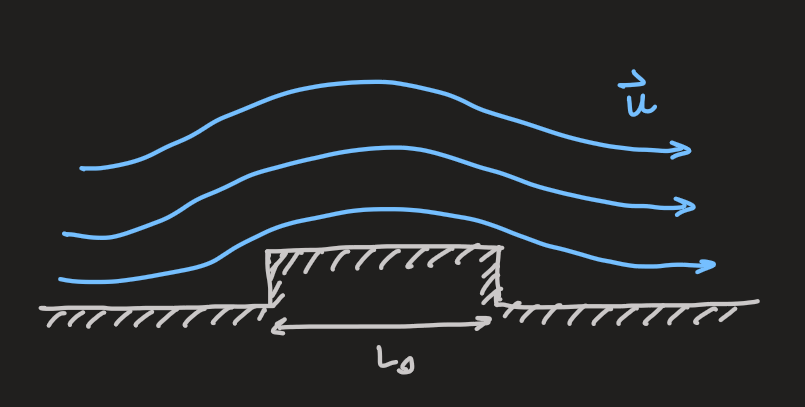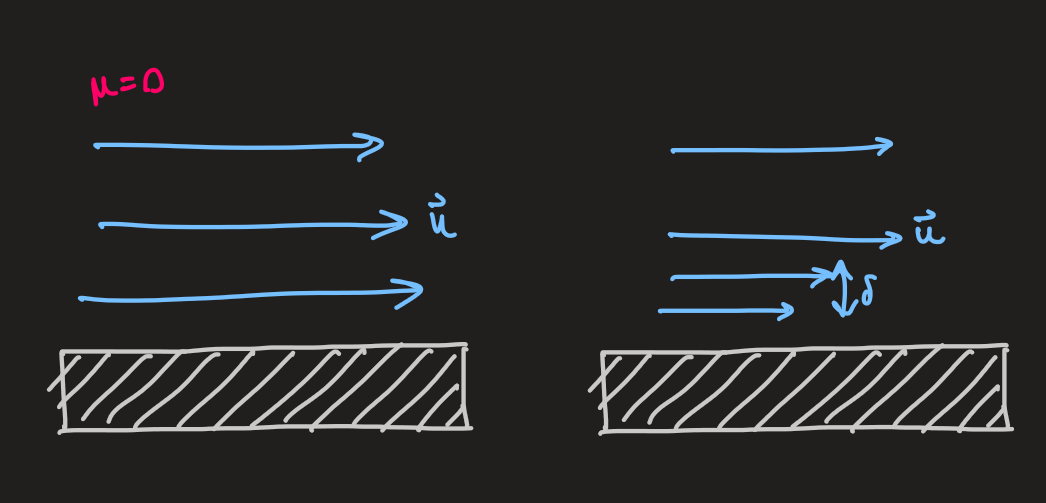PX285 - I5 - initial and boundary conditions
-
considering a rigid object in flow at the object's boundary,
, locally normal to the boundary -
boundary conditions:
- 'rigid wall'
- 'no flux', ie. nothing can flow into a solid, and on the surface of a moving object in a fluid,
matches the velocity of the object's boundary - 'no slip':
at the boundary
-
rederiving the reynold's number from the navier-stokes equation
-
considering flow over an obstacle

- comparing the inertial and the viscous terms:
where,
- the ratio of the inertial and the viscous terms:
-
so, reynold's number estimates the relative importance of the inertial and he viscous terms
-
if it is large, the flow is inviscid,
-
if it is small, the inertial flow can be neglected,
force densities -
eg: the pousselle flow:
- since the navier-stokes equation is a second order PDE, there is a need for
, at boundaries - in the inviscid limit, terms with
- this turns into a first order PDE - euler equation
- only one boundary condition is needed, eg. for

- the velocity experiences a 'sharp' gradient near the boundary
- euler and navier-stokes equations are similar except for a width,
, near the boundary - transition region - hence, the inertial and viscous terms:
- at the outer boundary of transition region:
- for large reynolds number flows, thin layer near the boundary where viscosity cannot be ignored
- this is called the boundary layer
- outside this,
will be an accurate model